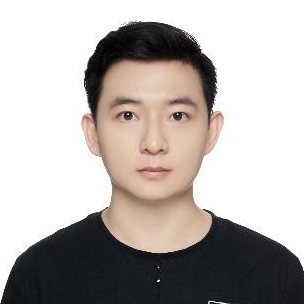-
 Suma Zhang
Chunmi
Product Director
Suma Zhang
Chunmi
Product Director
Since 2008, he has worked for McCann Bright and Sinclair Advertising, and served brands such as L'Oreal, Schwarzkopf, Nike and Fantasia etc. He started his own business in 2015 and has served tens of thousands of educational institutions in the past three years. He has rich experience in product design and product management.
Design philosophy: For a long time, "everything is based on the user" is the source of my product and design motivation.
With user-oriented Internet thinking, create your intelligent & innovative appliance
In a purely Internet environment, we provide services to users through the 'cloud', but there seems to be an invisible physical barrier between the product and the user, and there is no concrete point where the product can land. In the IoT (Internet of things) smart hardware scenario, all our user-centric "features", "content", "services "and "value" can be used to connect the product to the user intuitively, allowing the user to actually "touch" the product itself, perceive the changes in its functionality and experience the content and services brought by the Convenience.
In this workshop, we will take the AI multifunctional cooking machine as the "new" smart hardware and share how to apply the industry methodology from the perspective of product, interaction and content services to maximise the value of the user and the smart hardware.
In the workshop, I will share the following contents.
1. How "user-centred" thinking helps us to define
1.1 Positioning the user: the age group positioning method
1.2 Approaching users: using user interviews, replies to posts, questionnaires and other methods to enter the user scene and observe user behaviour
1.3 Understanding the user: the four quadrants of the user
The user is an inexperienced user, an exploratory user, an indifferent user, a geeky user
1.4 Become a user: from product thinking to user thinking, turn yourself into a user to think
2、Product positioning
2.1 Positioning in the market environment
2.2 Competitor analysis and positioning method
3、Demand mining
3.1 Demand sources
3.2 Criteria for demand analysis and execution judgement
4、Product implementation
4.1 Establishing scenarios: starting from space and establishing scenario stories
4.2 Understanding port differences in product landing points
4.3 Product Methodology
4.3.1 Development of different milestones for software and hardware
4.3.2 Software advancement roadmap
4.3.3 Roadmap unpacking
4.3.4 The MVP (minimum usable product) principle
4.4 Interaction should come from the scene and go back to the scene
4.5 Interaction swimlane diagrams for individual features can help unpack complex interaction logic
Note 1: Product roadmap
is the result of strategic planning and it usually includes the following key points.
1. product vision - what you want your product to be in the future
2. Strategy - an implementation plan detailing how your company will achieve the vision
3. Goals - time-bound objectives that can be measured by specific indicators
4. Initiatives - broad themes that unify the features that must be achieved in order to meet the objectives
5. Functionality - the actual part of the product, either as part of a function or as a third party application
6. Timeframe - A date or time period for the completion of a specific goal or feature. Typically, product roadmaps only represent approximations
7. status marker - used to track the progress of work
Note 2: IOT
The Internet of Things is a system for calculating the interrelationship of devices, machines and digital machines with a universal unique identifier and the ability to transmit data over a network without human or human-device interaction
Note 3: MVP
MVP: Minimum Value Product or Minimum Visual Product, an important concept in the product 0-1 process. It is the analysis and discussion of what needs to be solved from the user, from the core function to solve a user's pain point, and the internal demonstration of the feasibility of the product at minimal cost.
1、Background of the workshop
2、Introduction to the theory: how Internet thinking can be implemented into products combining hardware and software
3、Case review: the new TOKIT AI multifunctional cooking machine tells the story of hardware as a cornerstone for users, software interaction as a bridge and customized content as a service
4、Interactive practice: add an overseas downgraded version with the characteristics of the new device and learn how to target users, business objectives and software profitability models in the context of the lecture
5、Q & A interactive session
6、Summary Review
1、Junior Software and Hardware Product Manager
2、Junior Interaction Designer
3、Junior Internet Full Stack Product Manager
4、Junior IOT Product Manager
1、Learn to understand smart appliances from an internet perspective
2、Understanding the 0-1 birth process of a combined hardware and software product from a full-stack product perspective
3、Learn to apply industry methodologies from multiple perspectives to actual IoT products to maximize user value and commercial value of smart hardware
-
 TOKIT Kitchen AI Multifunctional Cooker
TOKIT Kitchen AI Multifunctional Cooker
-
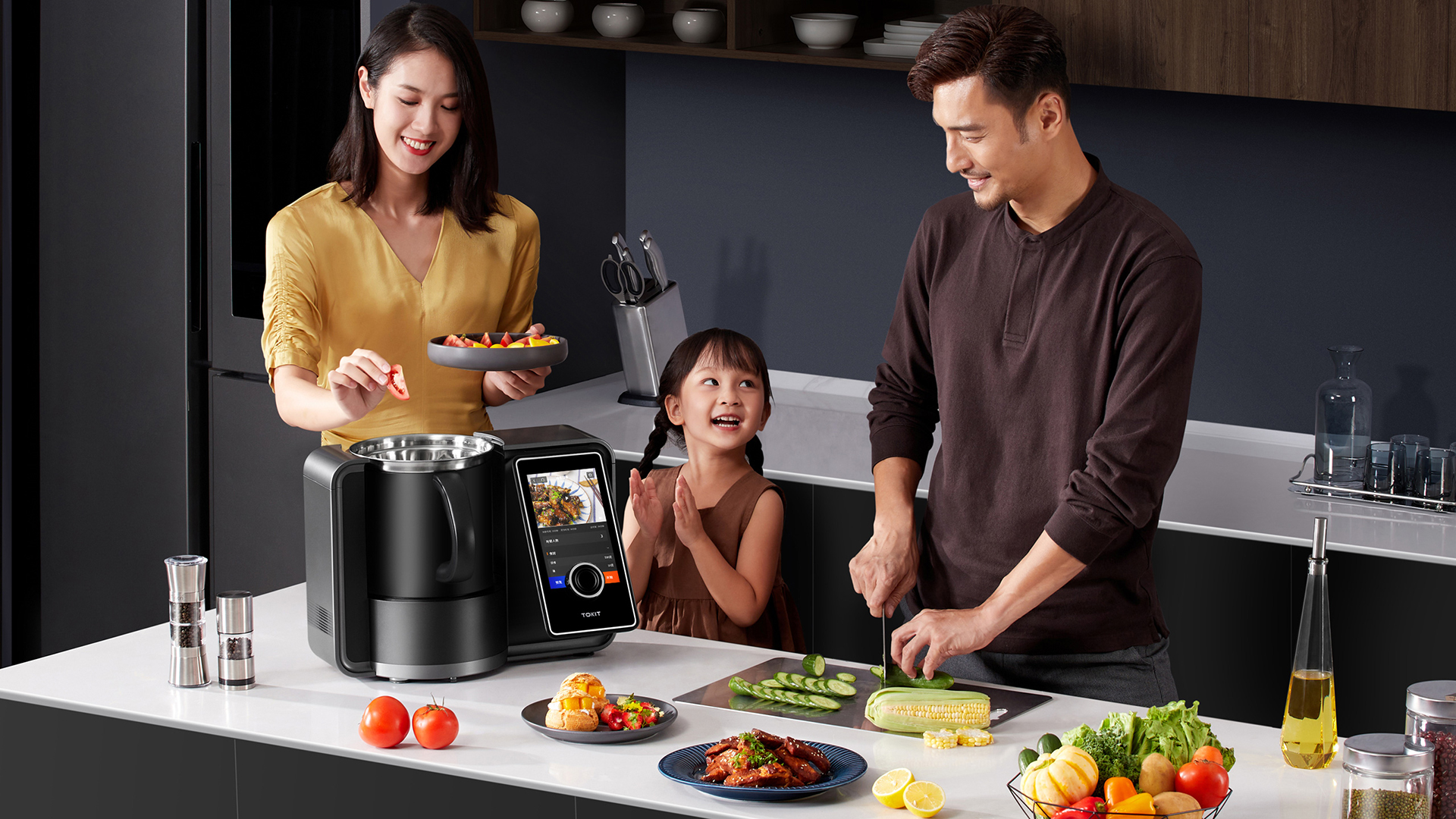 TOKIT Kitchen AI Multifunctional Cooker
TOKIT Kitchen AI Multifunctional Cooker
-
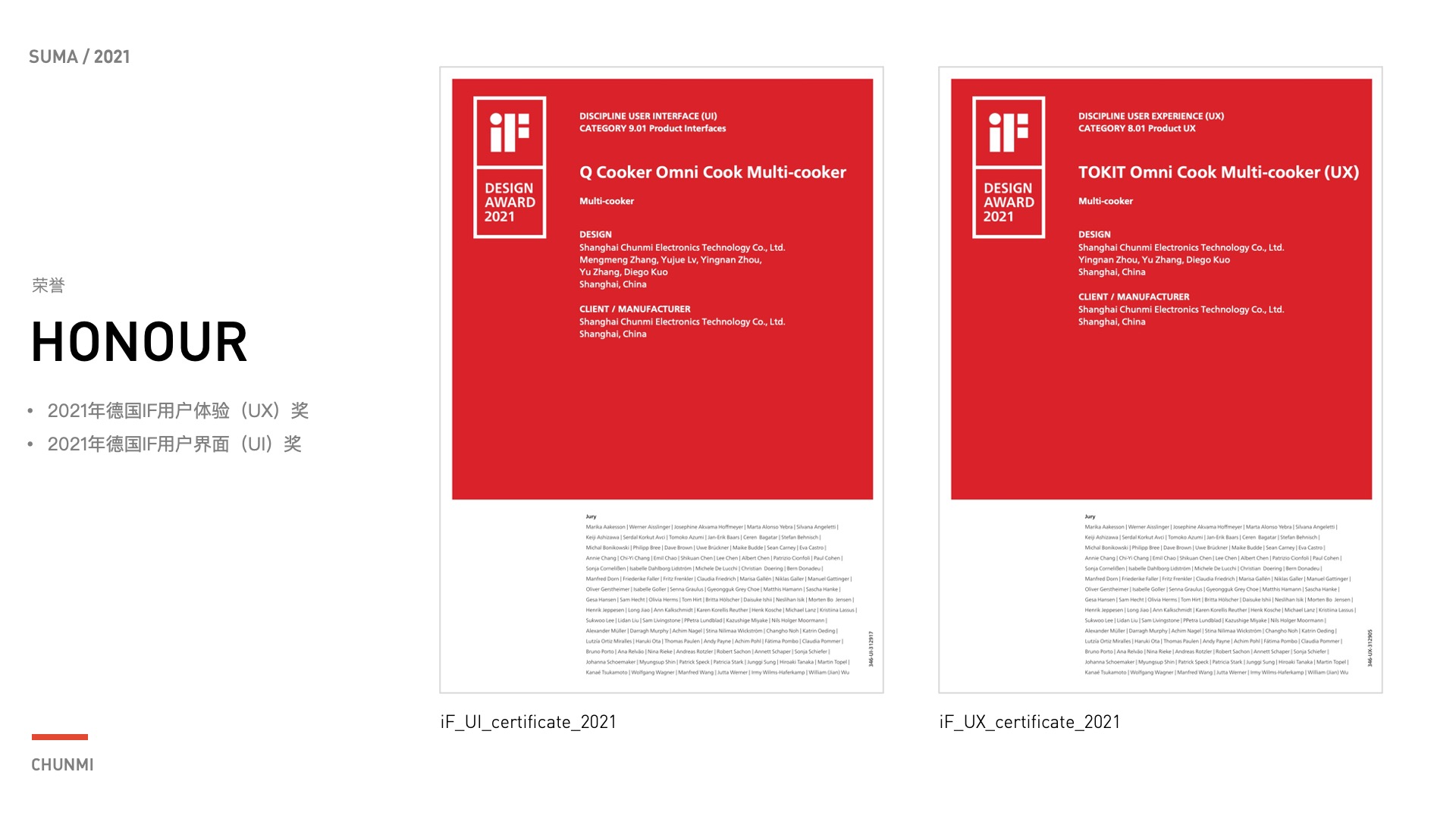 TOKIT Kitchen AI Multifunctional Cooker 2021 German IF User Experience (UX) Design Award
TOKIT Kitchen AI Multifunctional Cooker 2021 German IF User Experience (UX) Design Award
-
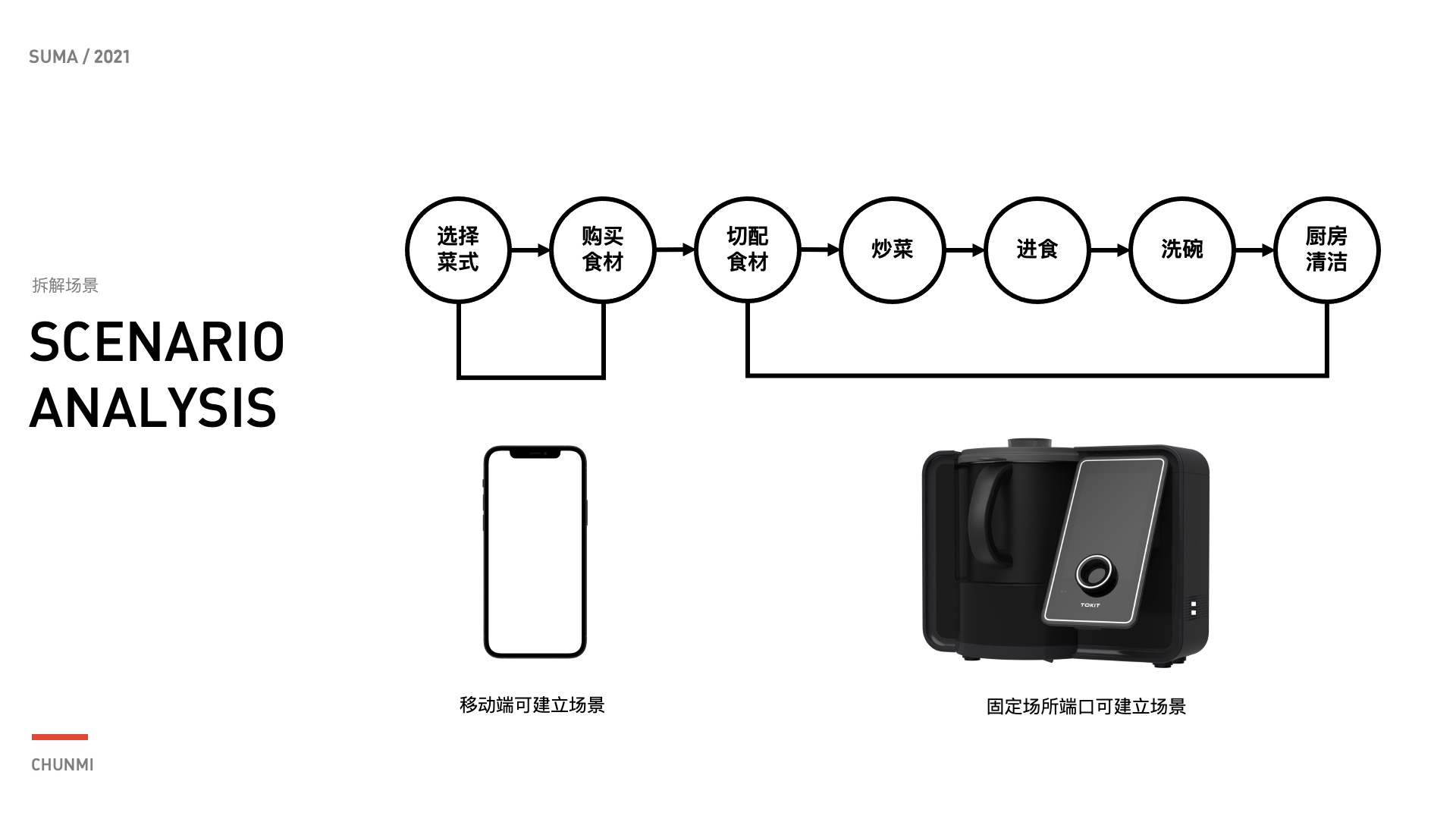 Dismantling scenes
Dismantling scenes
-
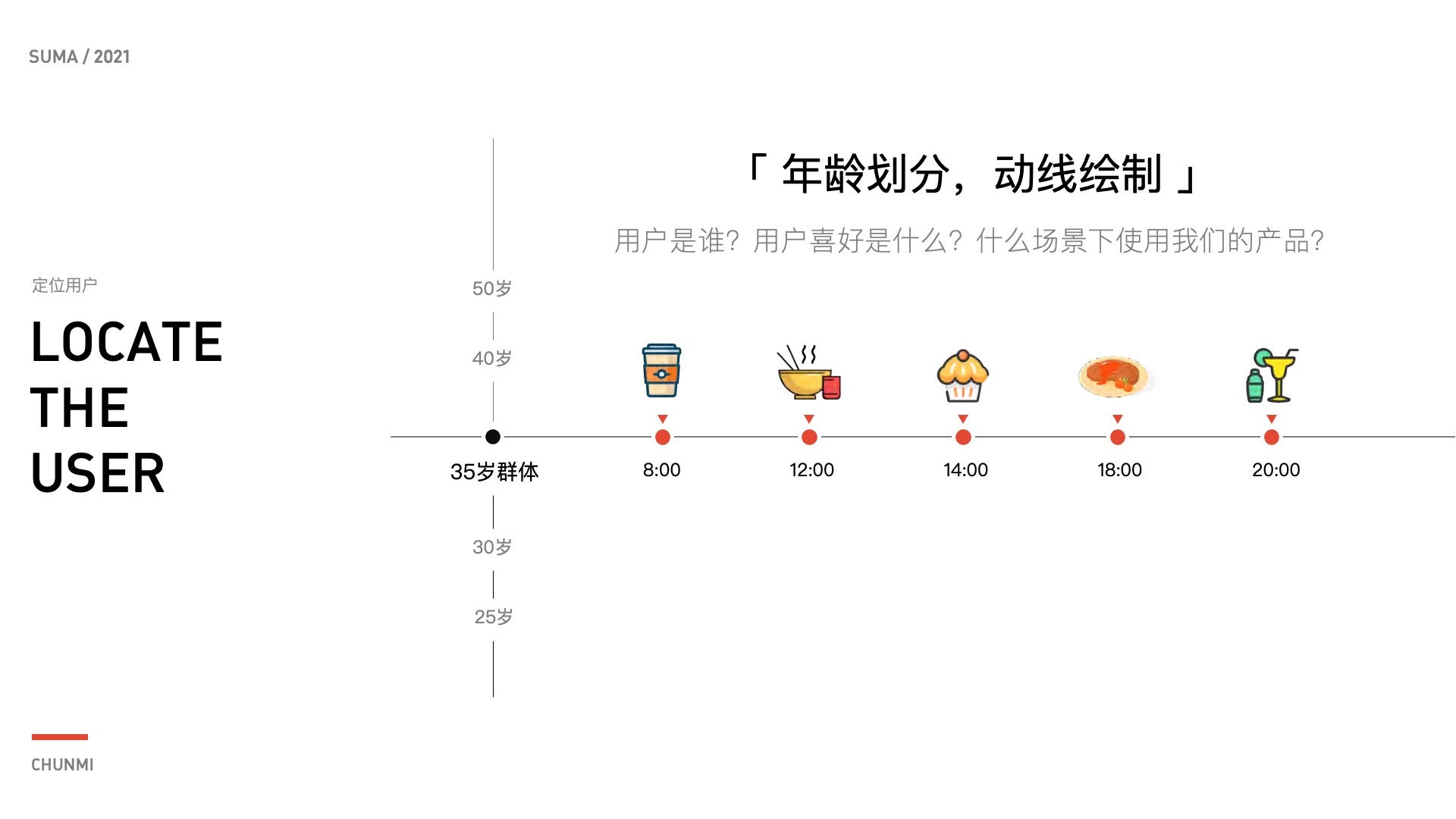 User profiling methods
User profiling methods
-
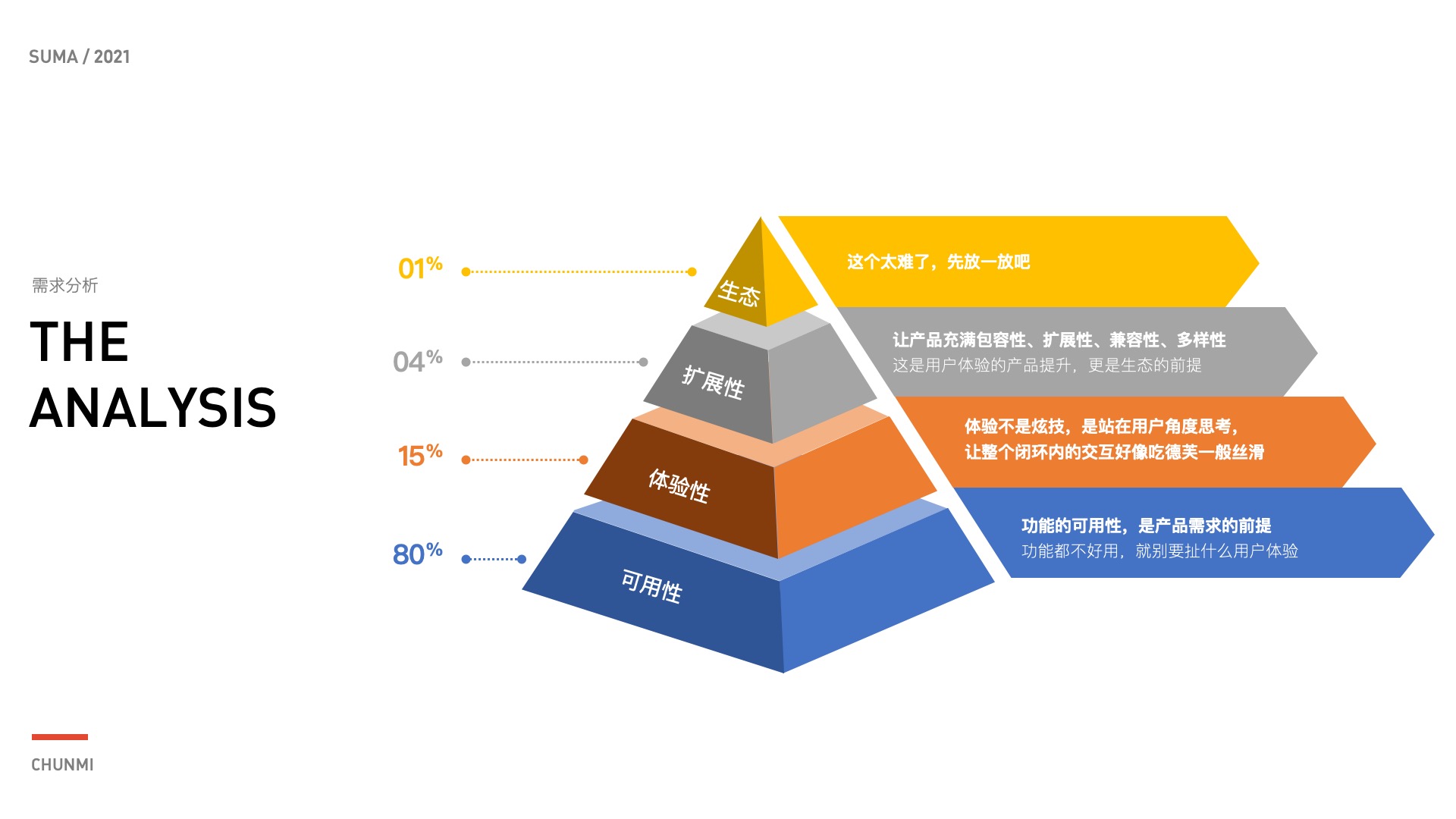 Demand grading
Demand grading
-
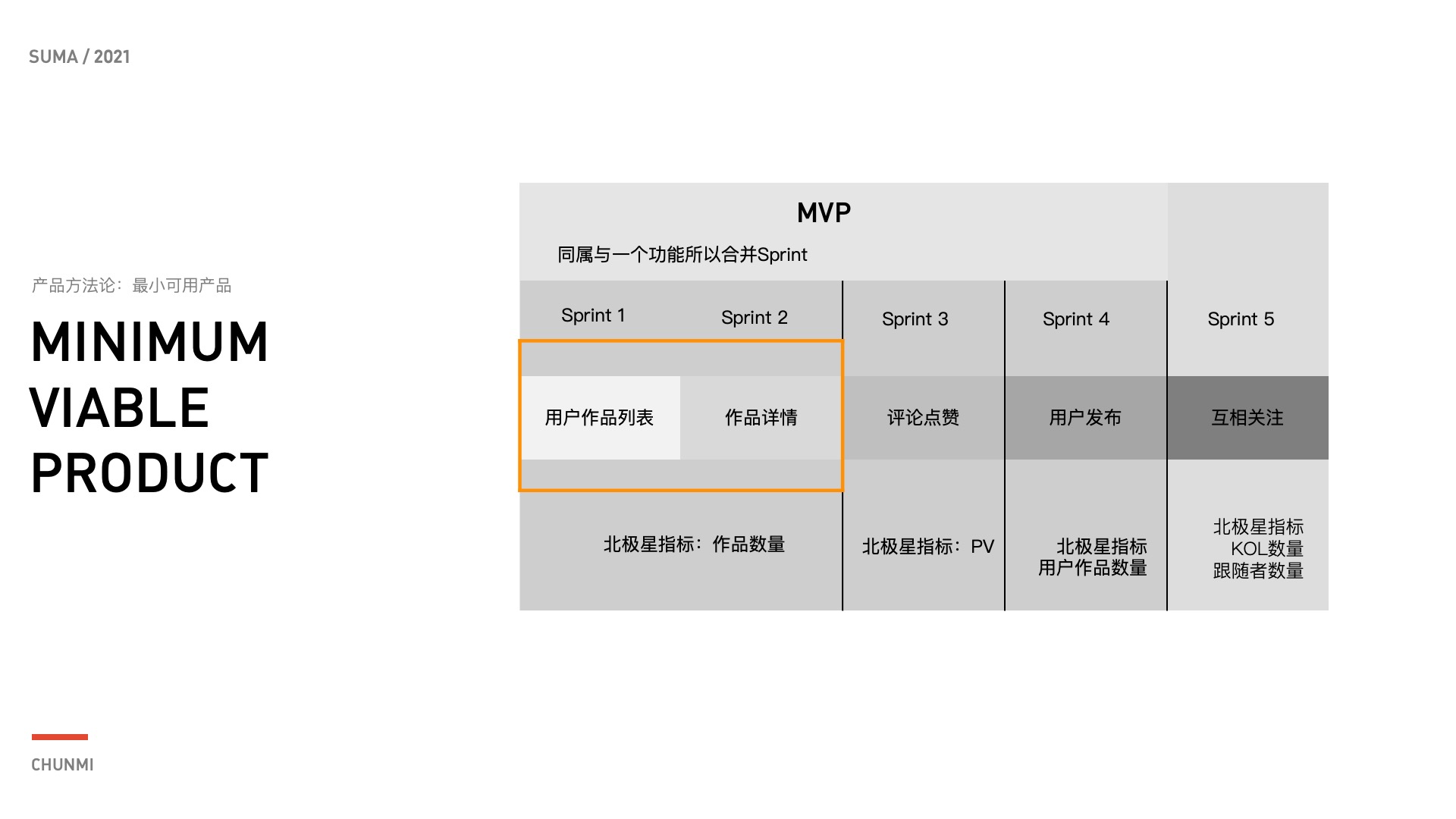 The implementation process of the MVP methodology
The implementation process of the MVP methodology
-
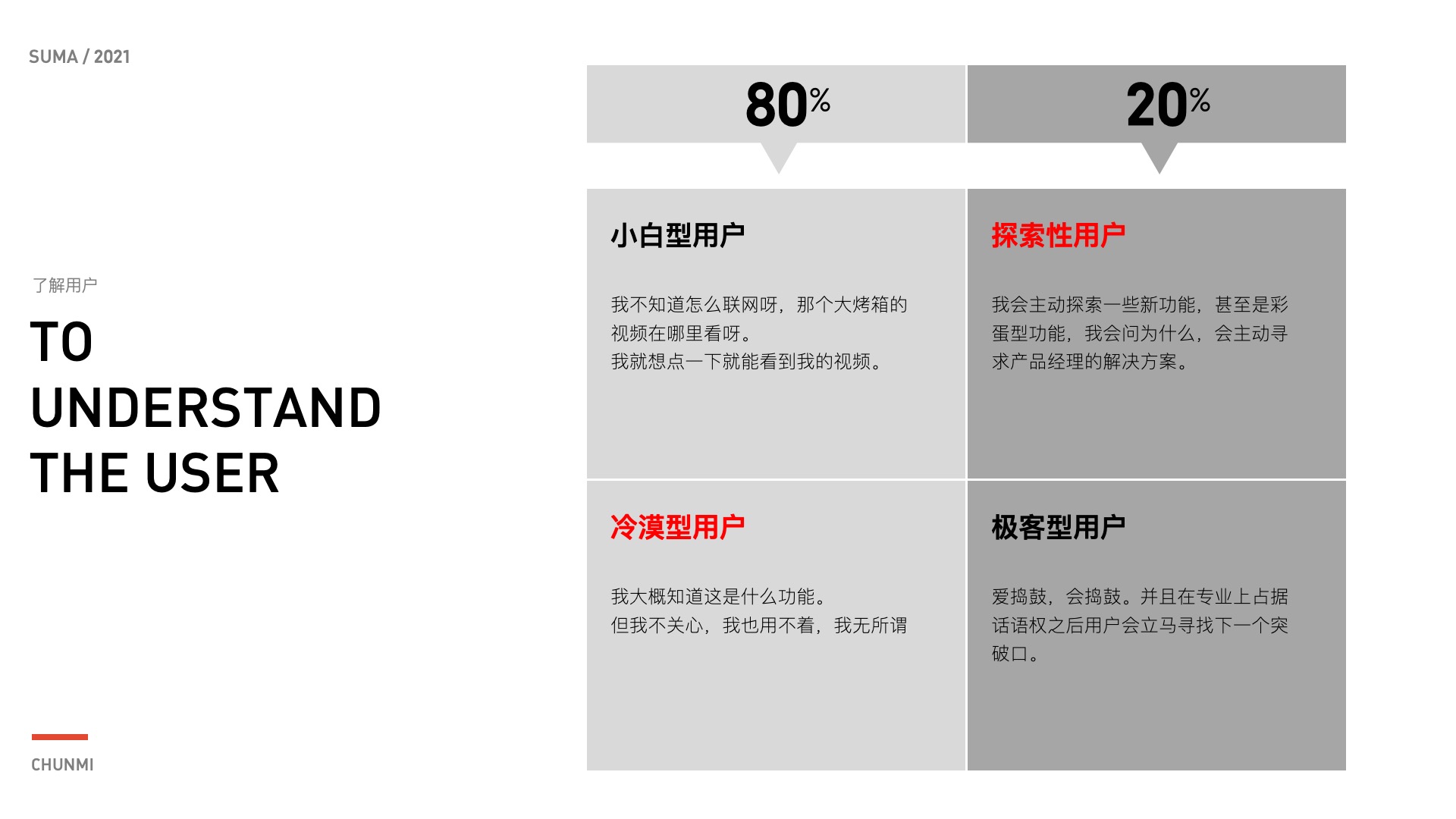 User Categories
User Categories
